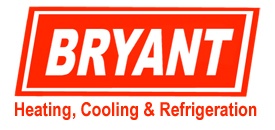New Furnace Efficiency Standards Proposed by Department of Energy
On June 13th, 2022, the Department of Energy (DOE) proposed updated efficiency standards for residential natural gas furnaces. The proposed rule aims to reduce pollution and lower heating costs for consumers by requiring a 95% Annual Fuel Utilization Efficiency (AFUE) rating for all new gas furnaces installed after 2029. This article explores the background of furnace efficiency regulations, what the new 95% AFUE proposal means, and considerations around replacing existing furnaces.
History of Furnace Efficiency Standards
While home heating in the U.S. predates the 1980s, the oil crises of those years highlighted issues around fossil fuel energy efficiency and pollution. The National Appliance Energy Conservation Act of 1987 first instituted a 78% minimum AFUE rating for new furnaces to address these concerns. Since then, new standards have been proposed but not always implemented. An increase to 80% AFUE was finalized in 2007 under the Energy Independence and Security Act.
Defining Furnace Efficiency
Unlike other HVAC products that use the ENERGY STAR rating system, furnace efficiency is measured by AFUE. This represents the percentage of heat produced that actually enters the home, with the rest escaping via the vent, chimney, or other means. The current minimum rating of 80% means 80% of heat goes into the home, while 20% is lost.
Details on the Proposed 95% AFUE Standard
The newly proposed rule would mandate a 95% AFUE rating for all new residential natural gas furnaces installed after 2029. The aim is to significantly reduce carbon and methane emissions over the next 30 years. The DOE projects national consumer savings of $1.9 billion per year. For individual households, heating cost savings could average around $60 annually.
2029 allows time for manufacturers to adjust product lines and for homeowners to plan ahead. It is the earliest the updated standards would take effect if finalized. The proposal is one of over 100 Biden administration energy efficiency initiatives planned for 2022.
Considerations for Higher Efficiency Furnaces
Furnaces with a 90% AFUE rating or above are now considered high efficiency. However, some older units still in operation can be as low as 56% AFUE. Manufacturers must include bright yellow Energy Guide labels displaying certified AFUE ratings. Homeowners can also look up furnace model numbers or consult HVAC professionals to verify efficiency if labels are missing or damaged.
In most cases, choosing a higher-rated furnace is a smart investment despite increased upfront costs. The greater energy efficiency saves money on heating bills in the long run. More usable heat output also improves home comfort. Enhanced indoor air quality, less noise, and lower greenhouse gas emissions provide additional benefits. Smart technology integration further increases convenience and can optimize efficiency.
However, a 95% AFUE furnace may not make sense in all replacement situations. Professional HVAC contractors can help homeowners assess options if full retrofitting is impractical. The proposal does not mandate immediate replacement of existing furnaces. But with older, low-efficiency furnaces, owners now face decisions around repair costs and reliability compared to new, greener models better aligned with future standards.







